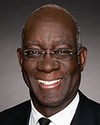Good evening, Mr. Chair and members of the committee. Thank you for the opportunity to appear as a witness, and thank you for undertaking this important study.
I'm here in Charlottetown with my colleague Dr. Lisa Garland Baird, who has a Ph.D. in nursing and is a senior researcher, as mentioned, at Veterans Affairs. She's working to advance research on women veterans.
I want to start by acknowledging that, unlike Colonel Jardine, I am not a woman and have no military service. However, I'm speaking to the committee about the experiences of women veterans. While I can speak about research that has been done or is under way on this topic, there is a limit to the value of human research—especially this research—when we fail to interpret it through the lens of lived experience. Their voices are essential.
The perspective I can share is that of someone who has gradually moved away from the notion that quantitative data is the singular goal, or even the best form of evidence. When it comes to veterans, who are mostly men, the realities for women are often concealed under aggregate numbers that convey the very different realities faced by men.
For example, veterans as a whole experience very little decline in income when they leave the military, as mentioned earlier. They very quickly regain and exceed their pre-release income levels. However, this is the story for men. Looking just at women veterans, we see a decline in income of almost 20% in their first year after release. Consider that in recent years, the proportion of military members who release for medical reasons is approaching one-third. That's quite high. The rate for women, over the same period, is considerably higher, at 42%.
Some trends are comparable between women and men veterans. Both, as mentioned, have similarly high rates of PTSD and back problems. Though every phase of the military life course is different for them, we encounter key differences between the experiences of men and women. We know women don't stay in the military as long as men do. We know they are more likely to suffer sexual trauma during service. We know that while they are just as likely to become officers, women release at lower ranks. We know women are more likely to release to be a caregiver. We know that once they release, they are more likely to work part time. We know they have more complex combinations of health conditions. This contributes to longer benefit application processing times. We know they have a higher risk of dying by suicide than women of the same age in the general population. It's still a lower rate than that of veteran men, but the risk for women does not diminish with age as it does for men.
These are trends that have been difficult to learn about and measure over time. There's obviously more to learn, but we have a lot of positive momentum that I'll group into a few categories.
First, the women veteran community is increasingly engaged across the department. VAC has established an office of women and LGBTQ2 veterans. VAC has launched the Let's Talk Veterans engagement platform. VAC has dedicated funding for community-based organizations focused on women veterans through the veteran and family well-being fund.
Second, there is a growing network of researchers in Canada looking specifically at topics of concern to women veterans. Several research interest groups and communities of practice have recently launched. There are new researchers entering the field of veteran well-being research and tackling challenging issues like women veteran homelessness. They're also increasing international veteran research collaborations.
Third, VAC is applying emerging best practices to respond to the needs identified through research and evidence. For example, VAC has established a dedicated team to process disability benefit applications from women. VAC is modernizing its table of disabilities, with gender equity in decision-making as a core principle. This includes updating entitlement eligibility guidelines to reflect additional sex-specific conditions. VAC has promoted a trauma-informed philosophy across its frontline services and claims processing. VAC has adopted the principles of sex and gender equity in research, or SAGER, to ensure sex and gender impacts are considered at every phase of research, from study design and participant recruitment to data analysis and knowledge mobilization.
Finally, there are new and better data sources supporting gender disaggregated analysis. The 2021 census was a major milestone in describing the veteran population. Starting in 2022, the new Canadian veteran health survey measures veteran well-being in multiple domains across the entire veteran population in Canada.
From what I have seen across the department, Veterans Affairs is genuinely looking to improve on every front when it comes to providing equitable services and programs. I look forward to the committee's report on this study and how it will improve our understanding of the needs, challenges and perspectives of women veterans.
Thank you, Mr. Chair.




